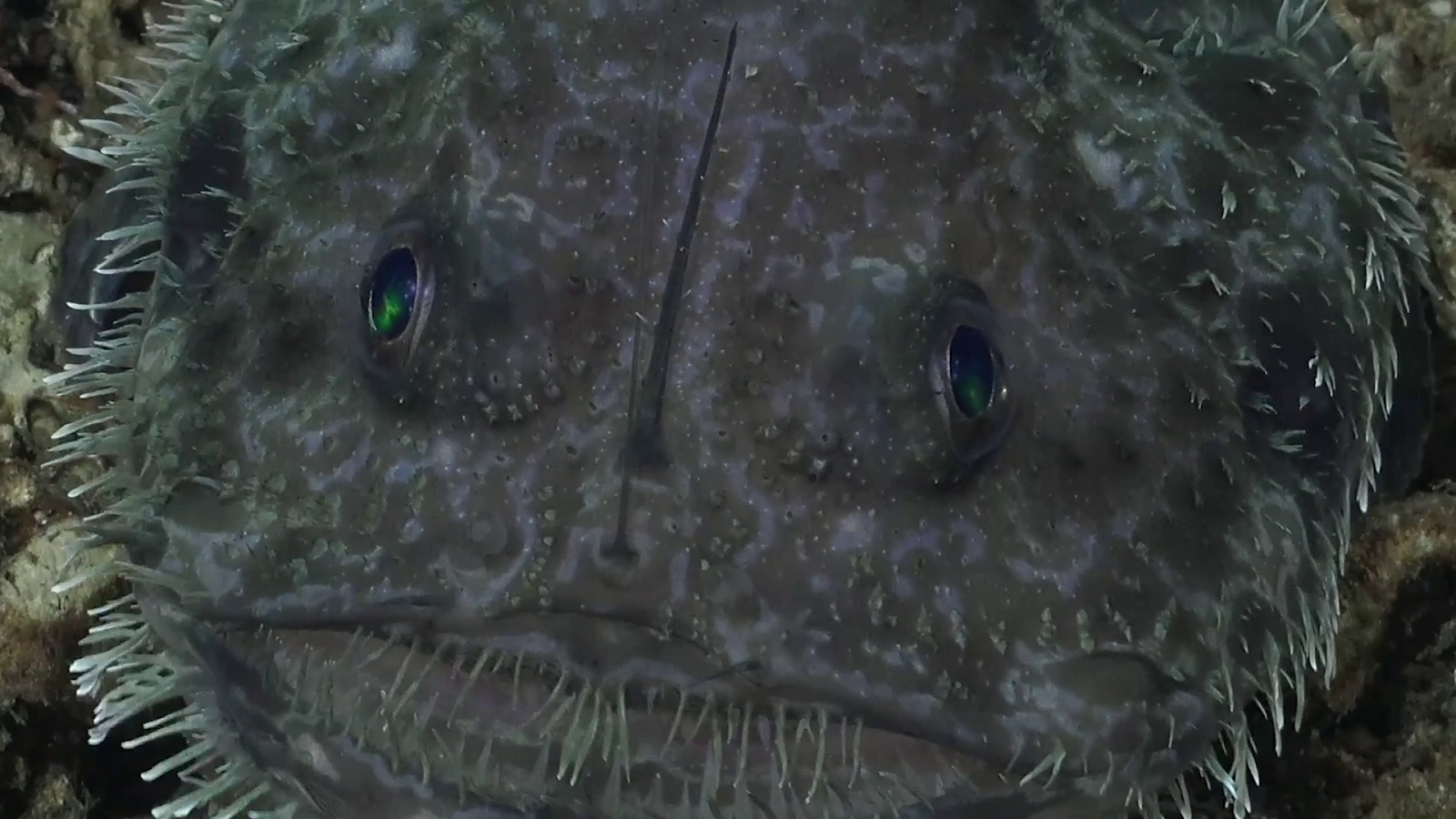Watch this monstrous 'sea devil' goosefish walk along the bottom of the ocean off the Galapagos Islands
Footage filmed 1,225 feet beneath the ocean surface shows a goosefish strolling along the seafloor before turning its bulbous head and bulging eyes straight at the camera.

Researchers have captured rare footage of a strange "sea devil" with bulbous eyes walking along the rocky bottom of the ocean floor using its fins.
The unidentified species of goosefish (Lophiidae) — also known as monkfish — was recorded on Oct. 9 in the Galapagos Islands.
Filmed 1,225 feet (373 meters) below the ocean surface, the goosefish uses its articulated pectoral and ventral fins to tread steadily over the coral before turning to look at the camera. The footage was captured during an expedition directed by the Schmidt Ocean Institute in collaboration with Parque Nacional Galápagos and the Charles Darwin Foundation that aims to map the vertical reefs of the Galapagos.
Goosefish are alien-like fishes that can live in depths of up to 2,952 feet (900 meters). They have huge heads in relation to their short, tapered bodies that are commonly reddish brown, speckled and covered in bristles.
Goosefish fins have modified joints so they can pivot and be used like feet.
Their wide mouths enable them to swallow prey as large as themselves. The name "sea devils," was given to them by fishers because of their monstrous appearance, according to Oceanscape Network. They can grow up to 4.6 feet (1.4 m) long and weigh around 49 pounds (22 kilograms).
Related: Why do deep-sea fish look like aliens?
Sign up for the Live Science daily newsletter now
Get the world’s most fascinating discoveries delivered straight to your inbox.
Goosefish are a type of anglerfish, with signature lures extending from the tops of their heads to entice prey closer.
They hunt by sitting and waiting — when the prey is near, they launch forwards, using all their conserved energy to engulf their prey.
Their diet consists mostly of fish but also crustaceans, such as lobsters. In shallow depths, there have even been reports of them eating arctic seabirds, called little auks (Alle alle), that dive too close. Their teeth are angled towards the back of their mouths, lowering the chances of prey escaping.
"One thing that really stands out in the goosefish is how optimized the body is to a very low-energy lifestyle," Jethro Reading, a deep-sea fish specialist from the University of Southampton in the U.K., who was not involved in the expedition, told Live Science in an email. He added they do not waste energy swimming away from predators but instead hide on the seafloor.
Their ability to walk underwater is another way of saving energy. "The use of the bumbling, rather inelegant-looking walking gait even when disturbed by the ROV [remotely operated vehicle] in the video speaks to how low energy they are — they are built for quick bursts of activity," Reading said.

Elise studied marine biology at the University of Portsmouth in the U.K. She has worked as a freelance journalist focusing on the aquatic realm. Elise is working with Live Science through Future Academy, a program to train future journalists on best practices in the field.
- Hannah OsborneEditor










